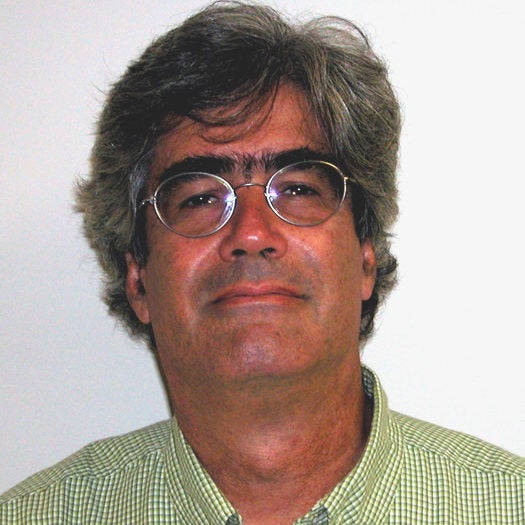- Professor Emeritus
- Department of Natural Resources Science
- Email: jamador@uri.edu
- Office Location: Coastal Institute, Office #024
- Website
Research
Our research focuses on understanding the interplay among microorganisms, flora and fauna, and the physical environment, and how this affects the structure and composition of microbial communities and the biogeochemical processes they carry out. We use this knowledge to address problems in the areas of wastewater treatment, soil quality, crop production, and ecosystem restoration, among others.
Teaching
I teach courses in Introduction to Soil Science, Soil-Water Chemistry, Soil Microbiology, and Microbial Ecology of Soils and Sediments, as well as Science Communication in the Honors Program. I’m also interested in science education, including novel pedagogical approaches to teaching soil science, and providing research opportunities for undergraduate students.
Education
Ph.D., Soil Science, Cornell University, 1990
M.S., Soil Science, Cornell University, 1986
B.S., Biochemistry, Cornell University, 1982
Selected Publications
-
- Görres, J. H., and J. A. Amador. 2021. Fauna. In Principles and Applications of Soil Microbiology, 3rd ed. (T. J. Gentry et al., Eds.), p. 181-212. Pearson, Upper Saddle River, NJ.
- Wigginton, S., J. Amador, B. Baumgartel, G. Loomis, and G. Heufelder. 2021. Mesocosm- and field-scale evaluation of lignocellulose-amended soil treatment areas for removal of nitrogen from wastewater. Water 13 (15), 2137 https://doi.org/10.3390/w13152137
- Romero, J., K. Hino, J. Loffredo*, M. Stolt, S. Moseman-Valtierra, J. Amador, and B. Pellock. 2021.Abiotic soil properties affecting interpretation of indicators of reduction in soil (IRIS) sensors in tidal and freshwater soils. Soil Science Society of America Journal 1−6. https://doi.org/10.1002/saj2.20293
- Amador, J. A. 2019. Active learning approaches to teaching Soil Science at the college level.Frontiers in Environmental Science – Soil Processes 27 August 2019 https://doi.org/10.3389/fenvs.2019.00111
- Duball, C. E., J. A.. Amador, L. E. Salisbury, and M. H. Stolt. 2019. Impacts of oyster aquaculture on subaqueous soils and infauna. Soil Science of America Journal 48:1890-1898.
- Amador, J.A., J.H. Gorres, B.V. Lancellotti, and G. Loomis. 2018. Nitrogen loading from onsite wastewater treatment systems in the Greater Narragansett Bay (Rhode Island, USA) Watershed: Magnitude and reduction strategies. Water, Air and Soil Pollution229:
- Cox, A., and J. Amador. 2018. How grazing affects soil quality of soils formed in the glaciated Northeastern United States. Environmental Monitoring and Assessment 190:
- Amador, J. A., and G. W. Loomis. 2018. Soil-Based Wastewater Treatment. Soil Science Society of America, Madison, WI. 348 pages.
- Cooper, J.A., G.W. Loomis, and J. A. Amador. 2016. Hell and high water: Diminished septic system performance in coastal regions due to climate change. PLoS ONE 11: doi:10.1371/journal.pone.0162104
- Amador, J. A., E. A. Miles, and C. B. Peters. 2007. The Practice of Problem-Based Learning. Anker Publishing Co., Bolton, MA, 156 pages.
Courses
- NRS 212 – Introduction to Soil Science
- NRS 412 – Soil/Water Chemistry
- NRS 426 – Soil Microbiology
- NRS 526 – Microbial Ecology of Soils and Sediments
- HPR 344 – Honors Seminar–Arts & Design and Writing

